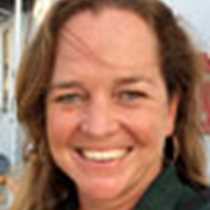The Sea Lion is following in the steps of one of the greatest adventures in history, that undertaken by a small group: the nation's first official exploration into unknown spaces. The team, led by Meriwether Lewis and William Clark, was the first to cross the Continental Divide and reach the Pacific Ocean by land, after experiencing the Great Plains and crossing both the Rocky and Blue mountain chains in an adventure that our historian brought to life for me.
I have also seen a wealth of new bird species, not to mention the spectacular spring flowers that have bought many a hike to life with their explosions of brilliant colors - can it be true that wild flowers can grow so large and bright?
The real highlight of the trip for me, however, has been the cataclysmic geology of the area. I had never realized quite how unique the geological formation of the Columbia region has been. Approximately 17 million years ago, massive flows of basaltic lava flowed out of immense cracks in the earth, in Northeast Oregon. This happened over 200 times in 7 million years, and the flows covered, layer upon layer, over 65,000 square miles! Later on, magma and other volcanic materials made their way through the layers of cooled lava to form the spectacular volcanoes found in the area, whose snow-capped tops were visible at various intervals throughout the trip, such as Mounts Hood and Adams. The most unbelievable phenomenon, however, occurred about 15 million years ago, with the ice age floods. A glacier branched into northern Idaho, damming up a branch of the Columbia River. This created the 3000 square mile Lake Missoula, which broke through the dam over 40 times, creating torrential floods down the Columbia, across the plateau and into the gorge, irreversibly changing everything in its wake. During these floods, about 16,000 square miles were inundated by hundreds of feet of water, and the Columbia River grew to have ten times the flow of all the rivers in the world to day! This phenomenon, discovered by J. Harlan Bretz, obviously smacked of the biblical, and caused one of the greatest controversies of last century - it is truly great to be able to observe the remnants of this incredible occurrence, as marked by the deep gouges through the successive lava layers making up the area.




